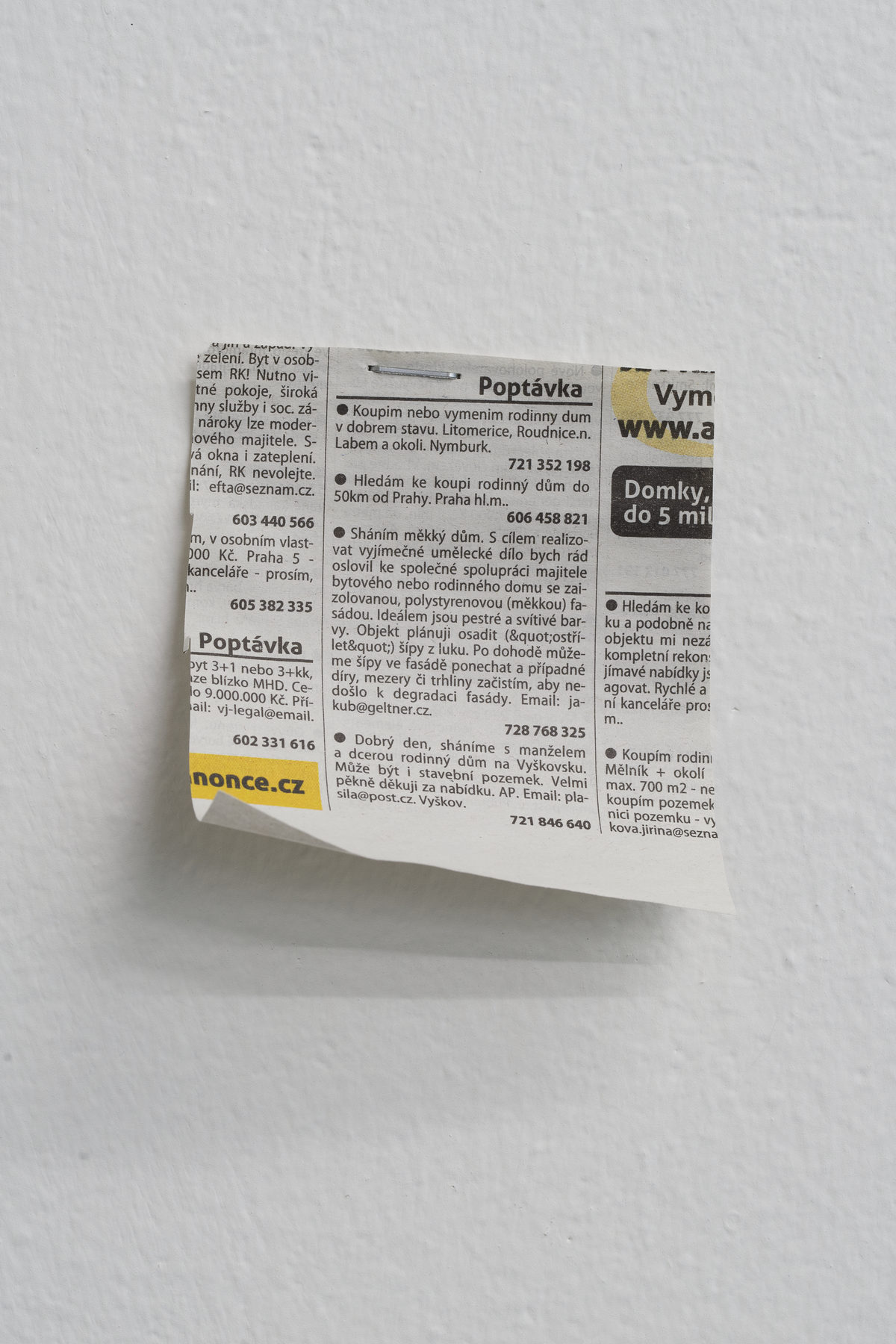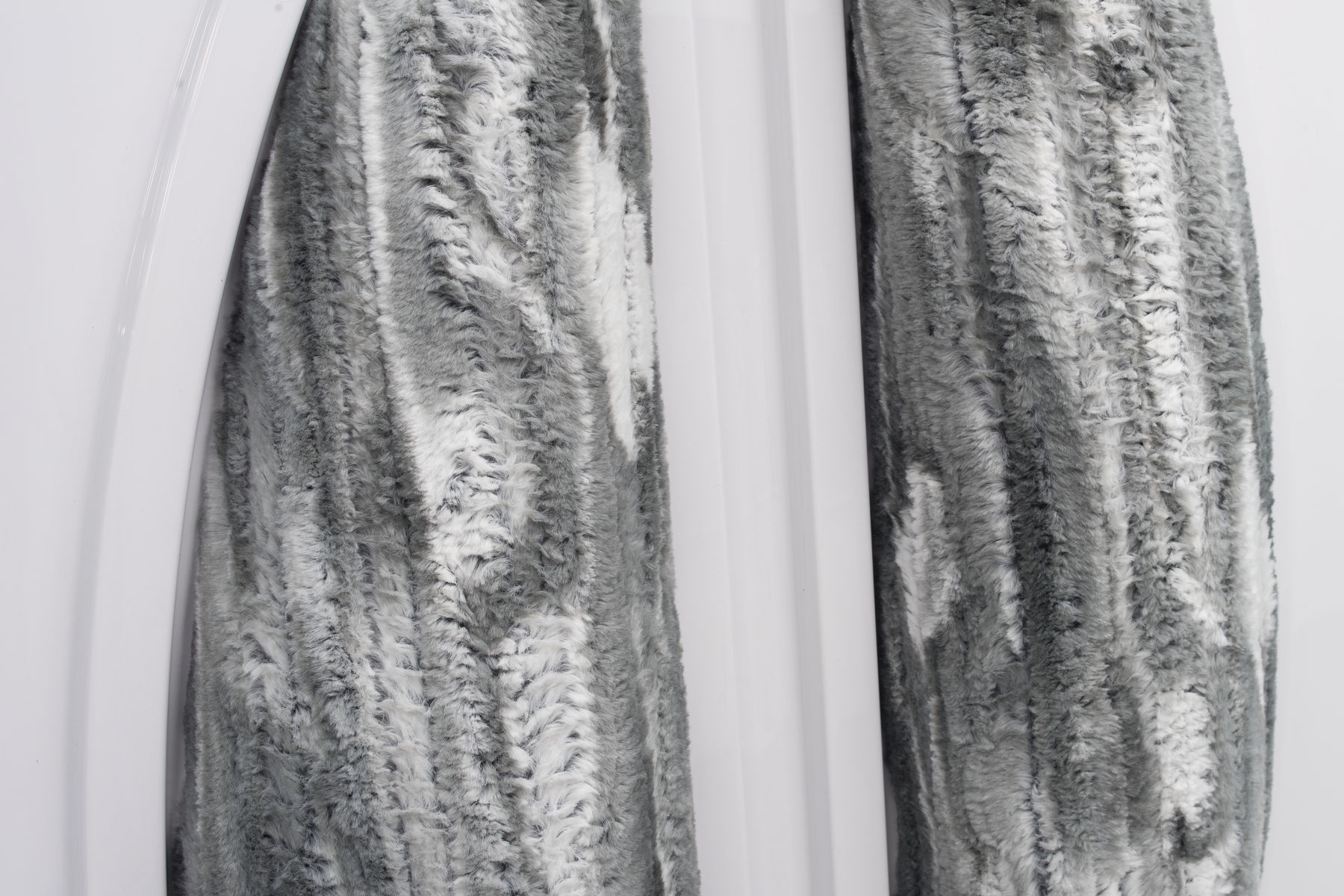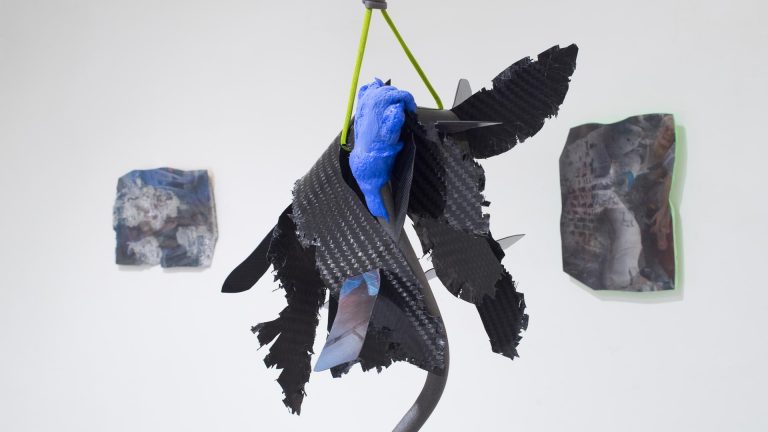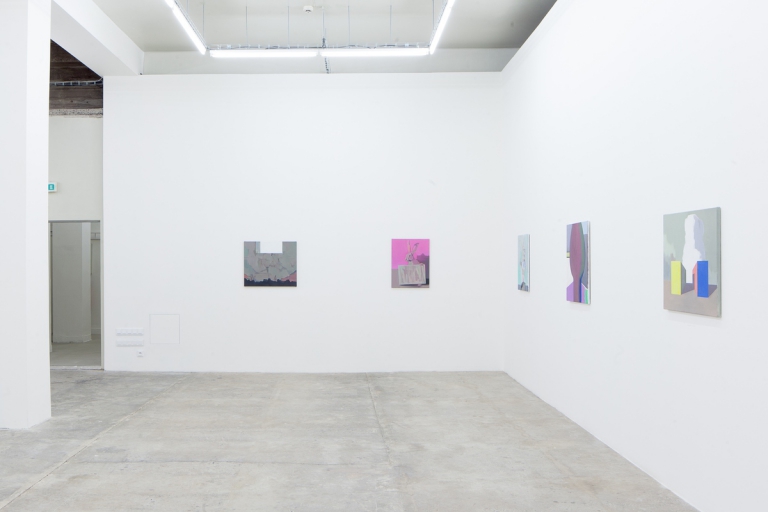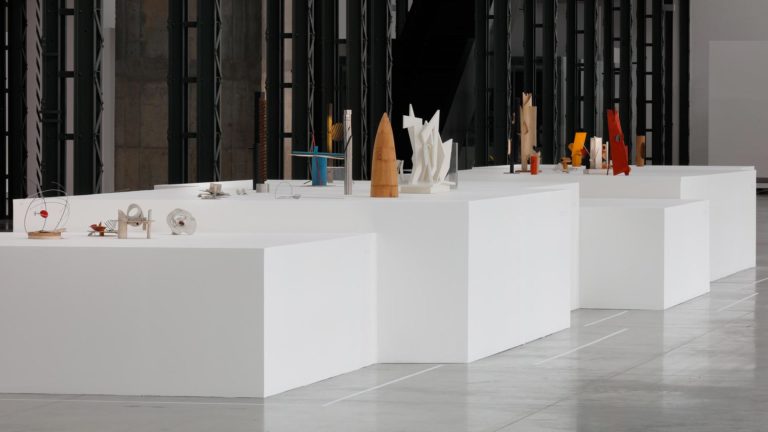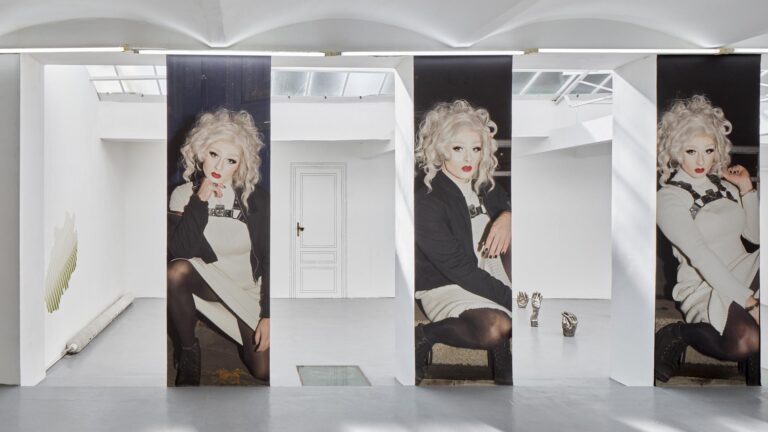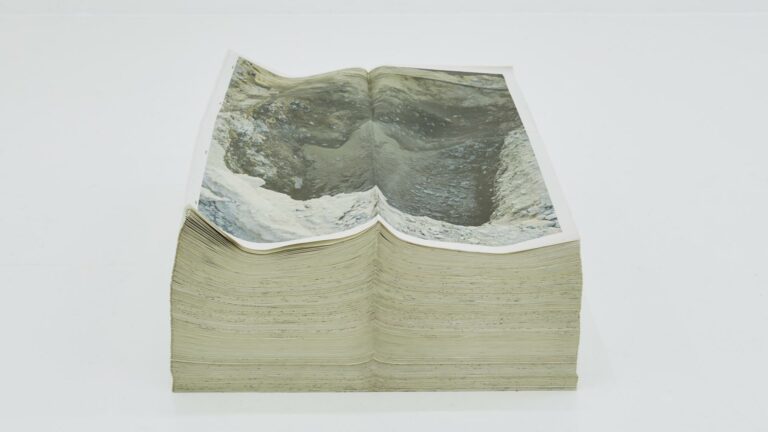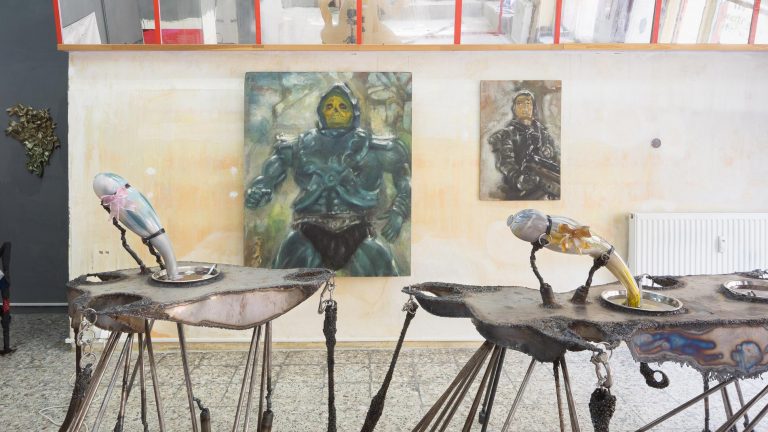Artist: Jakub Geltner
Exhibition title: Coverversion
Venue: Nevan Contempo, Prague, The Czech Republic
Date: November 10 – December 12, 2018
Photography: all images copyright and courtesy of the artist and Nevan Contempo, Prague
Coveversion by Jakub Geltner from the foundations to the roof
Turbo-buildings, architecture without architects, construction materials EPS-PET-PVC-PUR of the future, satellization. These dubious phenomena, bubbling away on the edge of the cultural and conscious world, form the focus of Jakub Geltner’s Coverversion. With a robust overview of (not only) the domestic repertoire of the architecture of poor taste, bourgeois formalism and consumer hedonism, Geltner shows us fragments of contemporary construction projects and accommodation from a different perspective embedded in unexpected aesthetic affairs. As the title of the exhibition implies, the artist introduces a remake of constellations of materials and objects that surround us, that relate to us, that we physically touch every day, but that often escape our attention. Rerouting their aesthetic into shapes and narratives that revive them and extract them from the suspicious properties of building materials introduces a new spirit and breath into them. And so, for instance, a building with a soft plaster facade becomes a training target, satellite dishes now play the role of plates, garnished bowls or platters for Czech delicacies, profiles of plastic windows morph into mysterious living beings, and the vile mouldings of door panelling inspires a kind of mysterious composition and strange aesthetic.
Coverversion is a commentary on the boom of fast semi-prefabs in the construction industry and the consumerist market economy that generate constructions and customs that disturb (the architectural) landscape and common sense. The author takes apart “modern” buildings, proud of their gaudy colours and plastic windows that insulate them completely from the outside world, buildings safely armed with parabolic shields, with a playfully sober reverse reflection reminiscent of the naive imagination of a child, and creates new imaginary stories from them. The works exhibited and the design of the space hold out the hope of an alternative world based on an associative vision of urban excesses and the free interpretation of the perversity of consumerism. The artist allows himself to be carried away by the wide range of meanings of architectural objects and materials, from their everyday functions to that which we can permit to intrude into our neurobiological imagination. The exhibition thus traces the difference between the stereotypical optics – a common utilitarian view of objects that depict the world according to the norms of (appalling) taste, custom, tradition, or according to real estate advertising catalogues – and the imagination that causes these elements to fall apart, to collide and deconstruct. As in the world of children, in which thinking has still not been subjected to the rigid rules of logic and our eyes have not grown normative blinkers, in the space of the gallery a model is outlined of a world of tangible interactions in which everyday objects and “modern” materials are transformed into the actors of imaginary narratives. In Geltner’s parallel satirical world, red buildings are the enemy or prey in a game of prehistoric hunting, dish antennas are large trays on which food tastes better, frames squirm like the locks of the Gorgon and windows are closeable stars.
The exhibition can be viewed as a combination of affective architecture, vital materialism and a substantial burlesque. The sculpturally manipulated plastic windows and doors, parodic epigrams of the satellite dishes and the kitsch model of a detached house with pierced polystyrene facade all draw attention to the grotesque triumph of the bourgeoisie, the resilience of consumerism, the ethnography of modern housing and the minimalist vocabulary of the demotic construction industry.
-Anetta Mona Chisa














